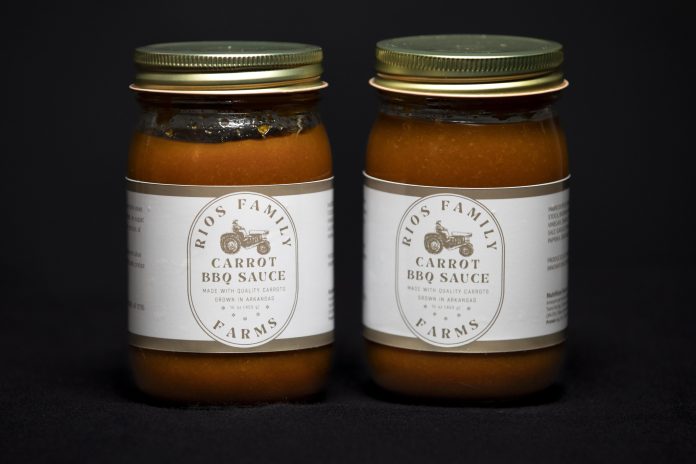In the bustling aisles of the grocery store, where vibrant packages and enticing labels beckon, lies a hidden world of numbers and nutrition waiting to be deciphered. Imagine each food label as a treasure map, guiding you toward healthier choices and vibrant well-being. Welcome to the adventure of reading food labels for calories, a journey that transforms your everyday shopping trip into an empowering quest for knowledge and vitality. With a sprinkle of curiosity and a dash of optimism, you’ll soon discover that these small, often overlooked panels hold the keys to unlocking a more mindful and nourishing lifestyle. So, grab your magnifying glass, and let’s embark on this enlightening expedition together, where every calorie counts and every choice is a step toward a healthier you.
Decoding the Calorie Puzzle
Understanding how to navigate the intricate maze of food labels can be empowering, especially when it comes to calories. Imagine each label as a mini roadmap guiding you toward better health choices. The key is to focus on the serving size first, as this number dictates the calorie count and nutritional value. A single package may contain multiple servings, so what seems like a modest 100 calories can quickly double or triple if you’re not careful.
- Check the serving size: It sets the stage for everything else on the label.
- Look for added sugars: These can stealthily increase your calorie intake.
- Spot the fats: Not all fats are created equal. Aim for unsaturated fats over saturated ones.
- Consider the fiber content: Foods higher in fiber can help you feel fuller longer.
By taking a moment to decode these labels, you become the artist of your own nutritional landscape, crafting a diet that nourishes both body and spirit. Embrace the challenge with optimism and transform the mundane act of reading labels into a powerful tool for personal wellness.

Unveiling the Secrets Behind Serving Sizes
Unlocking the mystery of serving sizes can transform your approach to nutrition. At first glance, the numbers on a food label might seem overwhelming, but understanding them is like learning a new language that speaks the truth of what you’re consuming. Serving sizes are not just arbitrary numbers; they are the key to decoding calorie counts and nutritional value. They tell you how much of a food is typically consumed in one sitting, and all the nutritional information listed corresponds to this specific amount.
When you’re navigating through food labels, keep an eye out for these crucial points:
- Standardization: Serving sizes are standardized by law, so similar products can be compared easily.
- Portion Control: The serving size is not a recommendation for how much you should eat, but a guideline for understanding nutritional content.
- Caloric Impact: If you consume more or less than the serving size, adjust the calories and nutrients accordingly. Double the serving, and you’ll double the intake!
By mastering the art of reading these labels, you gain control over your diet, allowing you to make informed and healthier choices with optimism and confidence.

Spotting Hidden Calorie Culprits
Embarking on the journey to a healthier lifestyle often requires vigilance, especially when it comes to understanding what’s in your food. It’s easy to overlook the hidden calorie culprits lurking in seemingly innocent items. When scanning the nutrition label, keep an eye out for serving sizes that might not align with how much you actually consume. Manufacturers often use smaller serving sizes to make the calorie count appear lower, so double-check how many servings you’re really indulging in.
Another sneaky source of extra calories can be found in added sugars and fats. These ingredients often masquerade under various names like high-fructose corn syrup, maltose, or partially hydrogenated oils. Watch out for these in your pantry staples, and consider opting for alternatives with natural sweeteners or healthy fats. Here are some common culprits to be mindful of:
- Dressings and sauces
- Beverages, especially flavored ones
- Packaged snacks and baked goods
By honing your label-reading skills, you can better navigate the grocery aisles and make choices that align with your wellness goals. Stay curious and empowered!
Empower Your Choices with Informed Label Reading
Embarking on a journey towards a healthier lifestyle starts with understanding what you’re putting into your body. When scanning food labels, it’s crucial to focus on more than just the calorie count. Look beyond the numbers and consider the quality of those calories. Are they coming from wholesome, nutrient-rich ingredients, or are they predominantly from added sugars and unhealthy fats? By analyzing the source of calories, you can make more balanced choices that align with your wellness goals.
- Serving Size: Always start here. The nutritional values are based on this, and it can be smaller than you think!
- Total Calories: This is your baseline, but remember, it’s not just about the quantity.
- Calories from Fat: A lower number here might indicate a healthier option, but check the type of fat.
- Sugar and Fiber: Compare these two to ensure you’re choosing foods that offer energy without spiking blood sugar levels.
By embracing a mindful approach to label reading, you empower yourself to make choices that nourish both body and soul. Remember, it’s not just about the calories, but the story they tell about your food.



